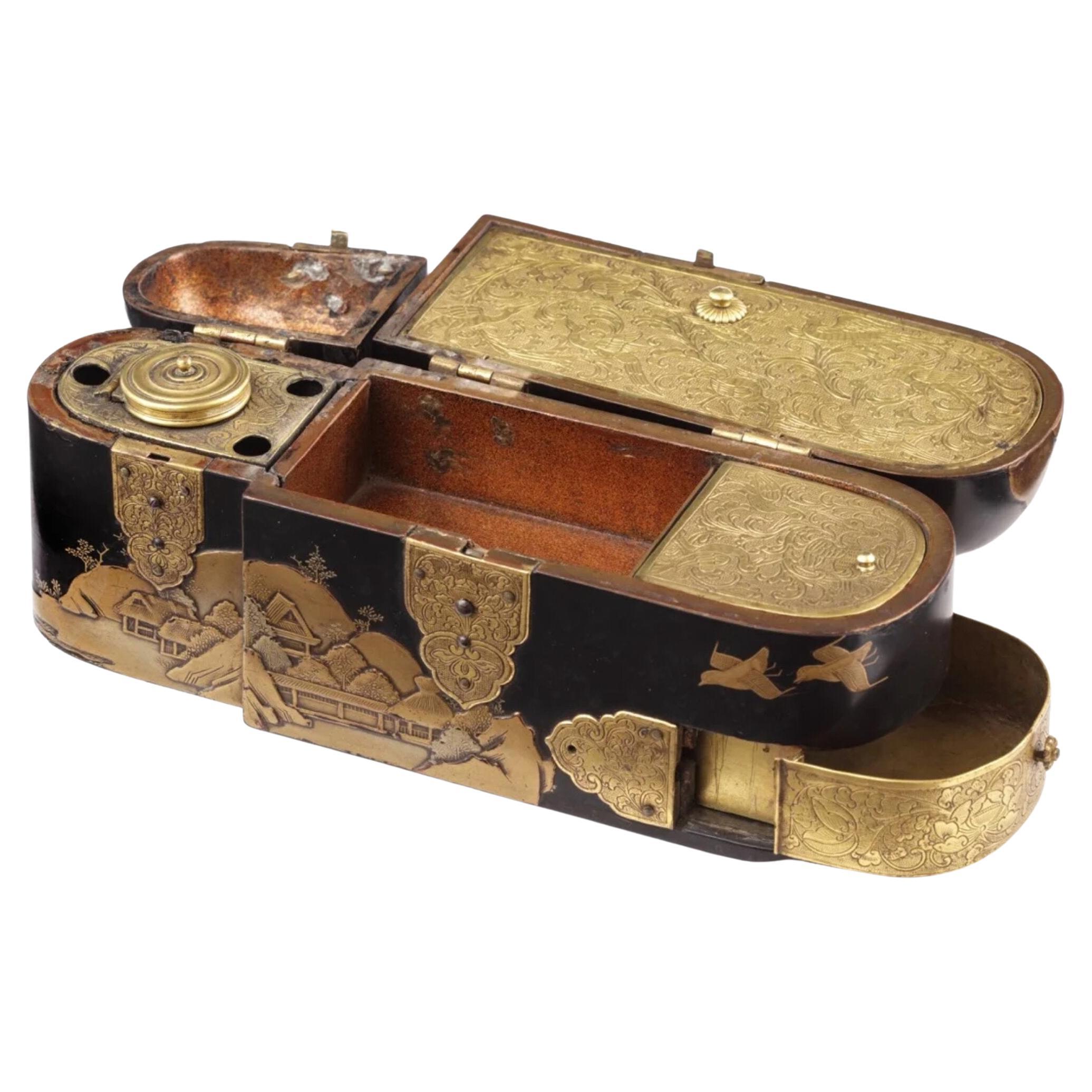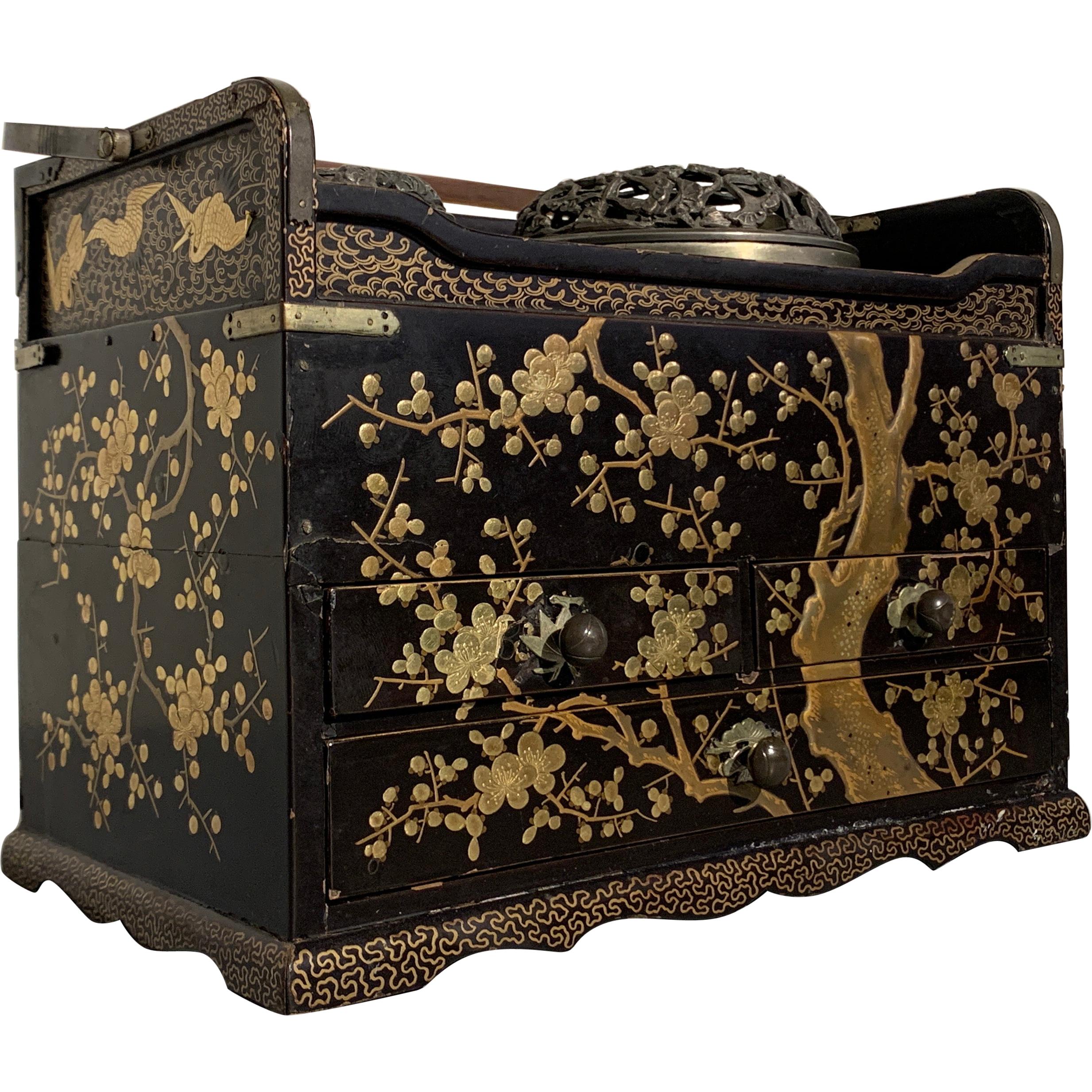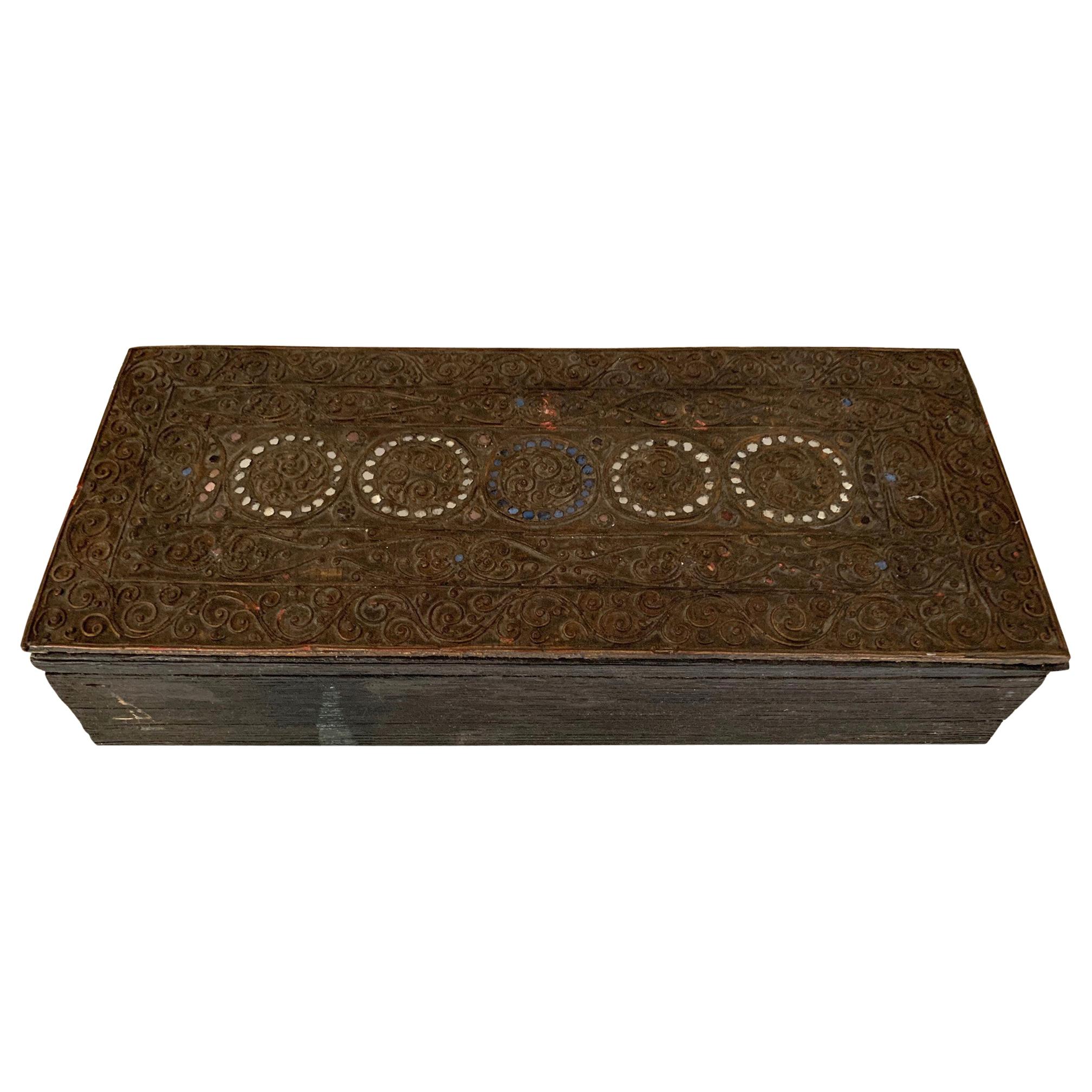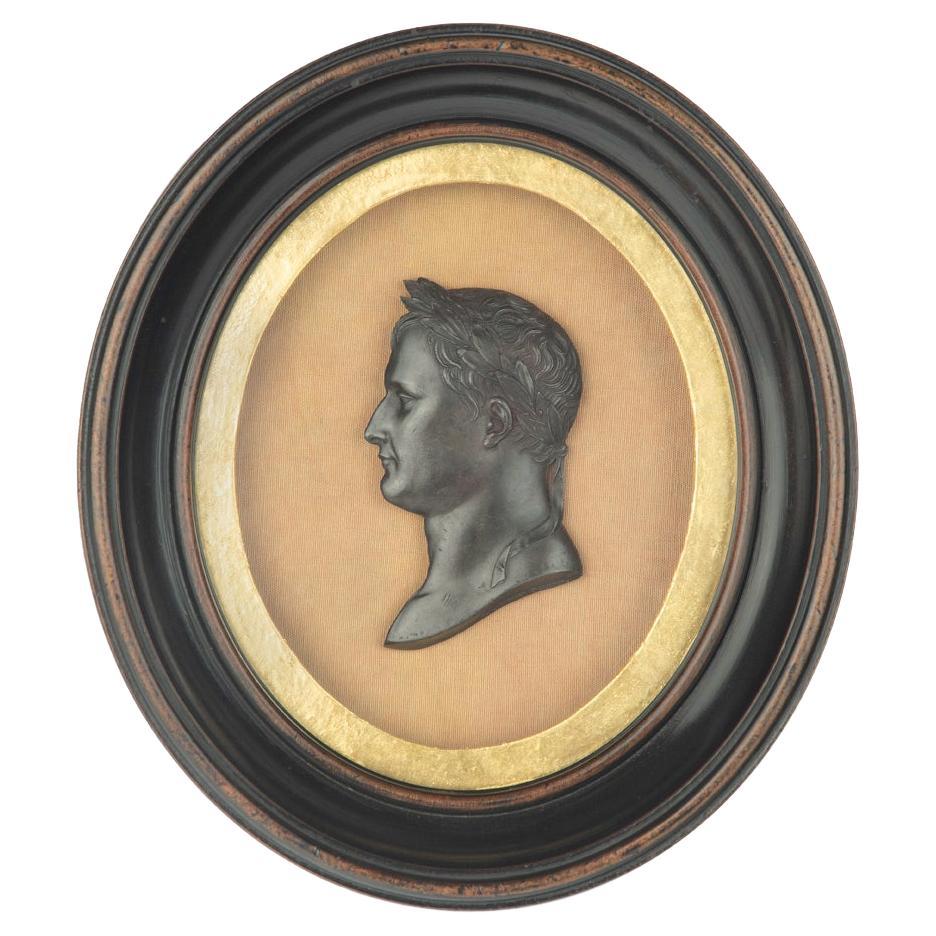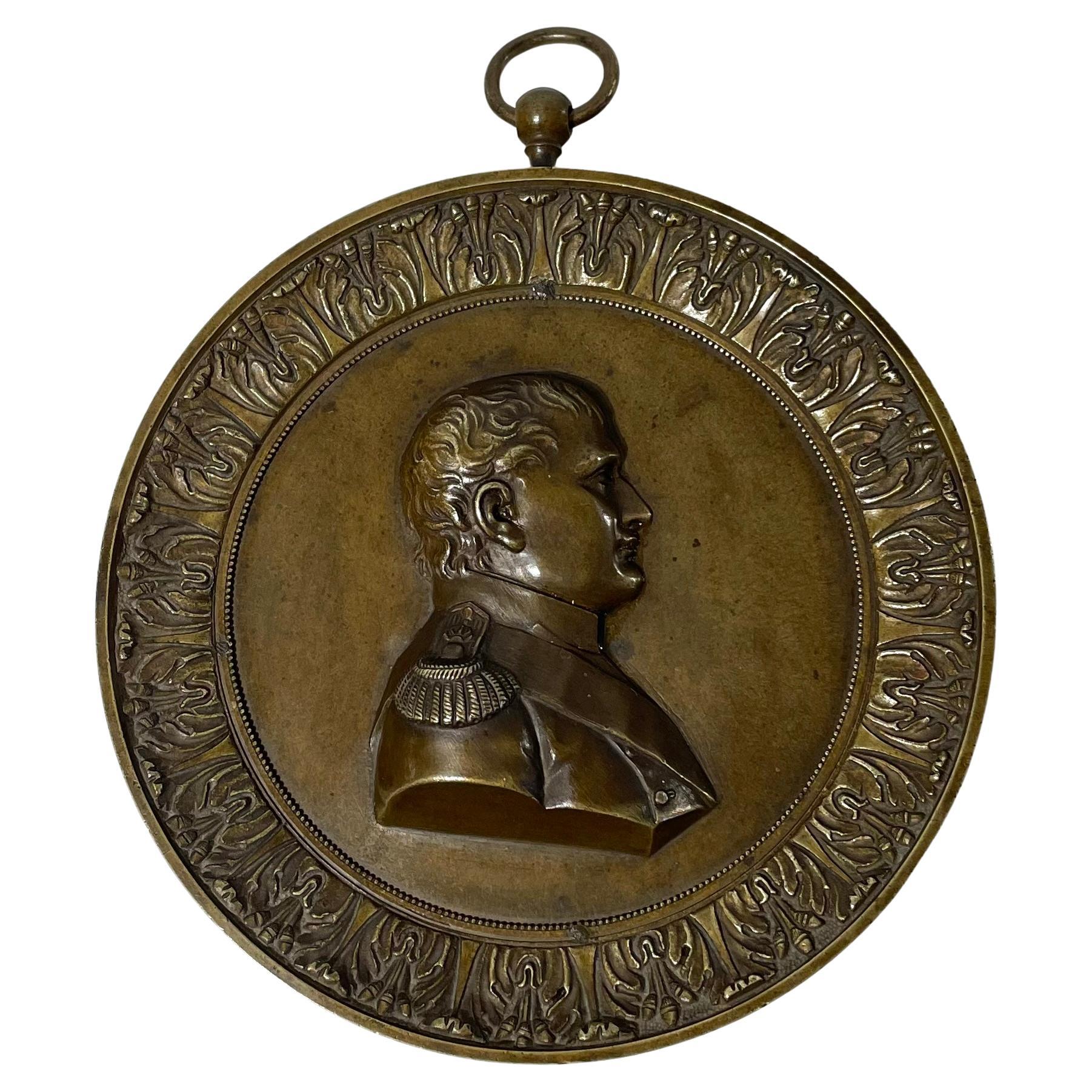Items Similar to Japanese Export Nagasaki Lacquer Box with the Portrait of Napoleon Bonaparte
Want more images or videos?
Request additional images or videos from the seller
1 of 2
Japanese Export Nagasaki Lacquer Box with the Portrait of Napoleon Bonaparte
About the Item
A Japanese export Nagasaki lacquer tobacco box with the portrait of Napoleon Bonaparte
Edo-period, circa 1810
The box in black lacquer on copper, the lid decorated with a portrait of Napoleon Bonaparte in gold hiramaki-e and nashiji. It has mother-of-pearl inlaid flowers in the four corners inside a similar inlaid border. The sides of the box are likewise decorated with gold lacquer flowers.
H. 2.4 x W. 15.2 x D. 11.3 cm
Who could have ordered this box? The most likely candidate seems to be Herman Willem Daendels (1762-1818). A revolutionary who sided with the Dutch Patriots in 1785, fighting the Orange Stadtholder William V. After the Prussian army came in to support William V, Daendels fled to France because of a death sentence, where he closely witnessed the French Revolution. He returned to the Netherlands in 1794 as a general in the French army under general Pichegru and as commander of the Batavian Legion. In 1806 Napoleon sent his brother Louis Napoleon to rule the kingdom of Holland as a monarch. In 1807 Daendels was appointed as Governor-General of the Dutch East Indies, where he arrived in 1808. There, Daendels did everything he could to prevent the English from occupying the colony. After Napoleon had dismissed his brother as King of Holland in 1810 and incorporated the Netherlands into France, Daendels returned to Holland and moved to Paris where Napoleon appointed him in 1811 as Divisional General and Commander of the 26th Division of the Grande Arme´e. Daendels joined Napoleon on his campaign to Moscow and fought in many battles including the Battle of Berezina. After the fall of Napoleon I, King William I of the Netherlands banned Daendels by appointing him Governor-General of the Dutch Gold Coast (present-day Ghana) where he died of malaria in 1818.
In 1809, when Daendels was Governor-General of the Dutch East Indies, two Dutch ships, the Rebecca and De Goede Trouw sailed from Batavia to Deshima. The Rebecca, with Hendrik Tilenius Kruithoff, the intended successor of Opperhoofd Doeff in Japan, was taken by the English navy. De Goede Trouw, with the Royalist Blomhoff aboard, therefore was the only and last Dutch ship to reach Deshima until 1817. If Daendels indeed ordered this box than it must have been ordered and collected for him in Deshima by the captain or an officer aboard De Goede Trouw.
- Dimensions:Height: 0.95 in (2.4 cm)Width: 5.99 in (15.2 cm)Depth: 4.45 in (11.3 cm)
- Style:Edo (Of the Period)
- Materials and Techniques:
- Place of Origin:
- Period:
- Date of Manufacture:Circa 1810
- Condition:Wear consistent with age and use. Minor losses. Minor fading. We offer restoration, which is not included in the price. Contact us for details.
- Seller Location:Amsterdam, NL
- Reference Number:1stDibs: LU5458233887072
About the Seller
5.0
Vetted Seller
These experienced sellers undergo a comprehensive evaluation by our team of in-house experts.
Established in 1985
1stDibs seller since 2020
19 sales on 1stDibs
Typical response time: 3 hours
- ShippingRetrieving quote...Ships From: Amsterdam, Netherlands
- Return PolicyA return for this item may be initiated within 7 days of delivery.
More From This SellerView All
- Japanese Nagasaki Export Lacquer Box with Depiction of the 'Trippenhuis'Located in Amsterdam, NLA Japanese Nagasaki export lacquer box with mother-of-pearl depiction of the Amsterdam ‘Trippenhuis’ Edo-period, circa 1830 H. 12.5 x W. 24 x D. 15 cm ? The house depicted on t...Category
Antique 19th Century Japanese Edo Lacquer
MaterialsMother-of-Pearl, Lacquer
- Rare 17th Century Japanese Export Lacquer Medical Instrument BoxLocated in Amsterdam, NLA rare Japanese export lacquer medical instrument box Edo-period, 1650-1700 L. 19 x W. 6 x H. 8.5 cm This unconventionally shaped lacquer b...Category
Antique 17th Century Japanese Edo Lacquer
MaterialsGold
- A Japanese export lacquer box with depiction of the Grand Hotel, YokohamaLocated in Amsterdam, NLMeiji period, circa 1873-1887 The black lacquered box decorated in maki-e and hiramaki-e gold, with on the lid a European style building complex and several Japanese and European figures walking along a street in the foreground. The sides are finely decorated with several insects and the inside with several compartments and nashiji decoration. H. 7.4 x W. 29 x D. 25.7 cm After the Americans forced Japan to open their harbours to the outside world and take part in international treaty and trade around the mid 19th century, the formerly feudal society rapidly changed. Japan was now focussing on an industrial future. One of the major international ports was Yokohama with its foreign embassies and warehouses - which attracted a great number of visitors of all sorts. For the higher society visiting Japan for the first time a new and ‘Western’ hotel had to be realised; hence the construction of The Grand Hotel on Kaigandori. The hotel was opened on August 16, 1873 (Meiji 6) and was soon considered the height of Western culture and elegance in Japan. The building probably depicted on this box, designed by American architect Richard P. Bridgens (リチャード・ブリジェンス, 1819 -1891), is the original hotel...Category
Antique 19th Century Japanese Lacquer
MaterialsGold
- Fine Japanese Export Red Lacquer Box with Masonic Symbols, circa 1800Located in Amsterdam, NLA fine Japanese export red lacquer box with Masonic symbols Kyoto/Nagasaki, 1800-1820 Red lacquer decorated with scattered flowers and flying birds with long tails in gold, wit...Category
Antique Early 19th Century Japanese Edo Lacquer
MaterialsGold
- 17th Century Japanese Export Lacquer Cabinet with Depiction the Dutch TradepostLocated in Amsterdam, NLA highly important Japanese export lacquer cabinet with depiction of the Dutch East India Company tradepost Deshima and the annual Dutch delegation on its way to the Shogun in Edo Edo period, circa 1660-1680 H. 88 x W. 100.5 x D. 54 cm This cabinet includes a later European japanned stand, but also a modern powder-coated steel frame. The latter can be designed and added to your specific needs. The sides and front of the rectangular two-door cabinet are embellished in gold and silver hiramaki-e and takamaki-e on a black roiro lacquer ground with a continuous design. The two doors depict a long procession of numerous figures travelling on foot and horseback along buildings and a pagoda into a mountainous landscape. This is the annual court journey, Hofreis, of the Dutch from Nagasaki to the Shogun’s court in Edo. Three horseback riders are dressed as Dutch merchants and a fourth figure, probably het Opperhoofd, is seen inside a palanquin, norimon. Just about to cross the bridge, two men are carrying a cabinet like the present one. Many Japanese figures on either side of the procession are engaged in various activities; some play musical instruments on board of small boats, others are fishing; figures inside buildings are depicted playing go, and farmers are tending to their rice paddocks. The upper part of the right door shows a large mansion, probably the local daimyo’s castle, with men kneeling before a man in the central courtyard. The court journey fits in with the foreign policy of the shogunate which accorded a role to the VOC alongside China, Korea, and the Ryukyu Islands who also had to pay tribute. However, the VOC employees were traders, having low status in Japan’s social hierarchy, and they were received with less deference than were the state embassies from Korea and the Ryukyu Islands. Nevertheless, the contacts with the Dutch were a welcome source of information to the Shogun about Europe and European science and technology. The left side of the cabinet depicts, in mirror image, a rare view of the artificial fan-shaped Deshima Island, the trading post for the Dutch in Japan. The island, where the Dutch flag flies, is surrounded by small Japanese boats and an anchored three-masted fluyt (cargo ship), flying Dutch flags, with on the stern the VOC monogram. On the bottom right a busy street of Nagasaki is shown, bordered by shops and leading up to the stone bridge. On the island the trees are beautifully painted, two cows can be seen, and the flagpole, all in very fine detail. Dutchmen and enslaved Malay are visible outside the buildings and two Japanese figures, probably guards, sit in a small hut in the centre. A maximum of fifteen to twenty Dutchmen lived on the island at any time and soldiers or women were not allowed. Restrictions on Deshima were tight, and the merchants were only allowed to leave the island by special permission. The Opperhoofd had to be replaced every year, and each new Opperhoofd had to make a court journey to pay tribute, present gifts, and to obtain permission to Margaret Barclay eep on trading. In the distance, many birds fly above the hills and a four-story pagoda can be seen. The right side of the cabinet is painted with other horse riders and their retinue journeying through mountains. The pair of doors to the front open to reveal ten rectangular drawers. The drawers are decorated with scenes of birds in flight and landscapes with trees and plants. The reverse of the left door with two thatched buildings, one with a ladder, underneath a camelia tree with large blooms; the right door with a three-story pagoda nestled among trees and both doors with a flying phoenix, ho-oo bird. The cabinet, with elaborately engraved gilt copper mounts, hinges, lock plates and brass handles, is raised on an 18th-century English japanned wood stand. A pair of large cabinets...Category
Antique 17th Century Japanese Edo Lacquer
MaterialsCopper, Gold
- Pair of Fine Japanese Export Lacquer Cutlery Knife Boxes, 18th CenturyLocated in Amsterdam, NLA pair of fine Japanese export lacquered cutlery boxes Kyoto or Nagasaki, late 18th century H. 33.5 x W. 24 x D. 21 cm The bow-fronted boxes with sloping lids flat at the top are made of hinoki wood (Cypress), coated with Japanese paper and decorated in lacquer with scattered gold birds and flowers on a nashiji background. The Japanese mounts are made of copper and both boxes still have internal partitions to keep the cutlery upright. The form of these boxes is similar to a pictorial-style knife box in the collection of the Groninger Museum (inv. 1989- 347), dated between 1730 and 1780, but the style of the decoration is more like that on a knife box in the Peabody Essex Museum in Salem (inv. E62271), which was brought to Salem by James Devereux, Captain of the Franklin, in 1799. Provenance: Henriette Jeane Christine van Neukirchen, called Nyvenheim (1807- 1849) and Nicolaas Johan Steengracht van Oostcapelle (1806-1866), thence by descent to the last owners, Ludolphine Emilie baronesse Schimmelpenninck van der Oye (1944) married in 1969 to Roland Daniel van Haersma Buma (1944), the last residents of castle Duivenvoorden near Voorschoten and the great-great-granddaughter of Nicolaas Johan Steengracht van Oostcapelle. There is no evidence that Nicolaas Johan himself, or any of his or his wife’s ancestors had ever been in Japan. However, Nicolaas’ grandfather (Nicolaas Steengracht, 1754-1840) was a director of both the VOC and WIC (West Indies Company...Category
Antique Late 18th Century Japanese Lacquer
MaterialsSilver
You May Also Like
- Japanese Lacquer Smoking Box, Tabako Bon, Edo Period, 19th CenturyLocated in Austin, TXA very fine Japanese maki-e lacquer decorated tabako bon, or smoking box, late Edo Period, mid-19th century, Japan. The elegant smoking box of black lacquer decorated with a wonderful gold lacquer takamaki-e design of a gnarled and elegantly twisted plum tree with branches in full bloom. A border of golden cranes in flight to the top. The smoking box, called a tabako bon, is comprised of an open section at the top with inset with two cylindrical metal canisters...Category
Antique Mid-19th Century Japanese Edo Lacquer
MaterialsLacquer
- A Very Fine Takamaki-e Lacquer Cheroot Case in the Manner of Shibata ZeshinBy Shibata ZeshinLocated in Ottawa, OntarioThe 'ishime' lacquered case consisting of two conforming molded sections with one sliding overtop the other, both sides decorated with hand painted gilt, silver & burnt dark russet (kasshoku) lacquers, depicting motifs in low relief of a rat with an acorn on one side and two acorns on the opposing. In Japanese culture rats are considered auspicious symbols of fertility & wealth, acorns symbolize prosperity & growth. Signed with characters and a mon on one edge. Takamaki-e is a lacquer technique in which metallic powders such as silver, gold, copper, pewter etc., are used in combination with lacquer & clay-dust to build up motifs in low relief. Please note that the color tones & hues of the lacquered motifs appear somewhat more vibrant in the images due to ambient lighting conditions. Regarding the opinion stating the superior quality of this fine example being likened to works associated with those by Shibata...Category
Antique 1870s Japanese Meiji Lacquer
MaterialsLacquer
- Burmese Buddhism Scripture with Lacquer CoversLocated in Atlanta, GAA large Theravada Buddhism scripture book from Burma, circa late 19th century-early 20th century. The book opens to continuous folding pages that is accordion like. Ink scriptures in curvy Burmese language were handwritten on both sides of the pages. The papers are bind by two lacquered wood covers with elaborate design that features relief scrolls and mini mosaic...Category
Antique Late 19th Century Burmese Other Lacquer
MaterialsLacquer, Paper
- A bronze portrait of Emperor Napoleon Bonaparte, by AndrieuLocated in Lymington, HampshireA bronze portrait of Emperor Napoleon Bonaparte, by Andrieu, showing Napoleon facing to the right and wearing the laurel garland of a Roman emperor, stamped Andrieu Fecit (Andrieu ma...Category
Antique 19th Century French Nautical Objects
MaterialsBronze
- Relief Portraits of Napoleon Bonaparte in Bronze from the 19th CenturyLocated in Knivsta, SEA beautiful relief portrait of Napoleon Bonaparte, made in France during the 19th century. Patinated bronze. High quality of the casting. Wear consistent with age and use.Category
Antique 19th Century French Wall-mounted Sculptures
MaterialsBronze
- 4 Volumes, W.H. Ireland, The Life of Napoleon BonaparteLocated in New York, NY4 Volumes. W.H. Ireland, The Life of Napoleon Bonaparte. Bound in full red morocco with covers displaying hand-painted oval portrait miniatures of either Napoleon or Josephine (the Napoleon portraits...Category
Antique 1820s English Books
MaterialsLeather
Recently Viewed
View AllMore Ways To Browse
Japanese Antique Bento
Vintage Japanese Bento Box
Japanese Tanzaku
Suzuki Silver
Burmese Lacquerware Betel Box
Burmese Yun
Chinese Chippendale Jewelry Box
Manju Netsuke
Pagan Bya
Temple Ranma Panel
Antique Korean Black Lacquer Mother Of Pearl
Chinese Enamel Smoking Set
Japanese Lacquer Inro Bag
Peranakan Mirror
Rabbit Netsuke Ojime
Sake Storage Container
Vintage Presentation Kimono
Lacquered R Wardrobe
